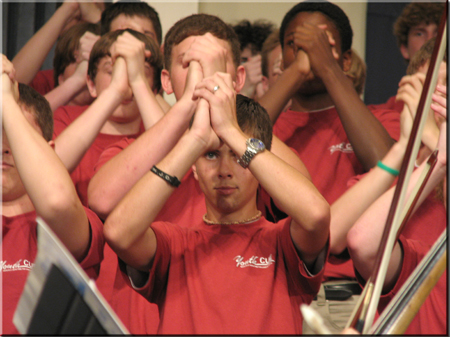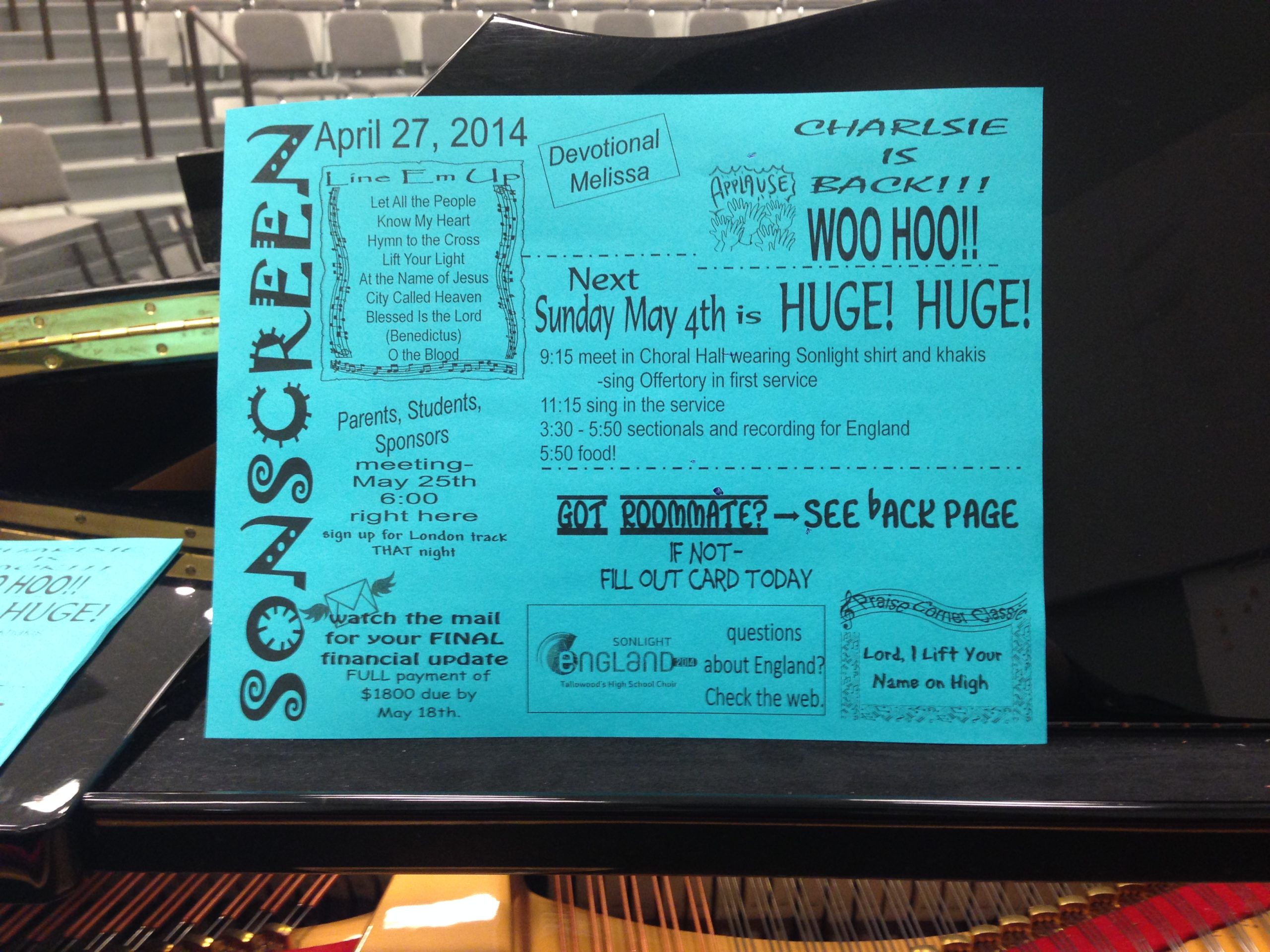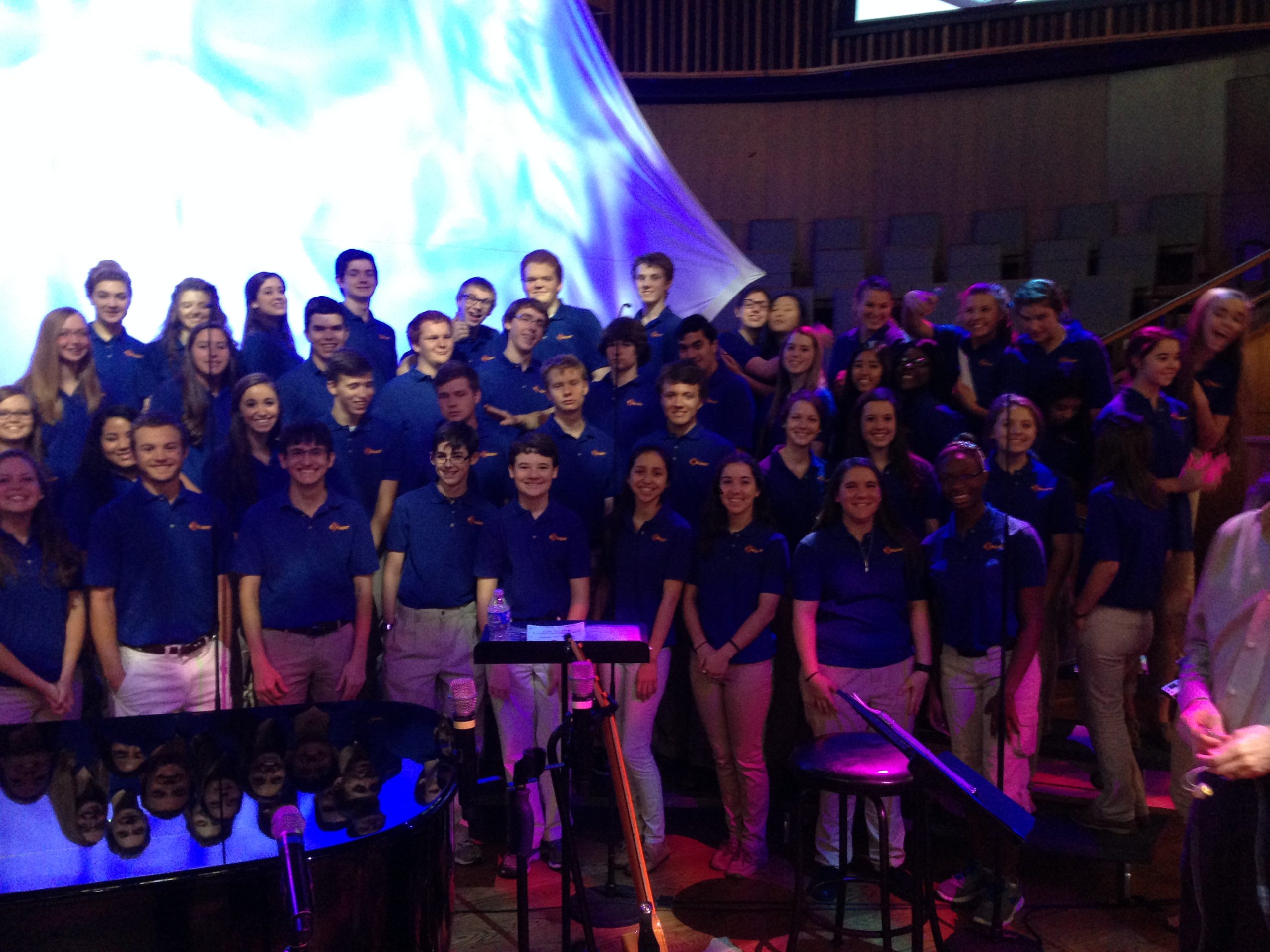We all learned in school that the BEST way to do choral vocal placement is for the same ears to listen to all the voices in the choir and place the singers accordingly. It is by far the best way! However. . . .
In 33 years of leading junior high and high school choirs at Tallowood I have never had that luxury. I had to develop effective ways that got the job done with (mostly) good results.
Through the years, we have chosen a variety of approaches. The choice is usually based on that year’s repertoire and the size of the choir.
All Sections Created Equal
If the rep for the year is limited in range—the sopranos and altos never (or rarely) leave the staff, and all the guys are on the same part—this is, basically, a three-part choir.
When that is the case, I try to have equal numbers of every grade in each section. Based on the previous year’s choirs, I estimate the number of students that should be coming to rehearsal from each grade.
I print out large chair signs with “6th Grade Boy,” “6th Grade Girl,” “7th Grade Girl,” “ 7th Grade Boy,” etc. and tape the signs to the chairs of the section, being careful to put the youngest guys closest to the sopranos and altos, but within the guys section.
I do this to allow the guys to sing the part that feels best to their voice. I tell them, “If the part the other guys are singing is too low for you, then switch to another part for that song.”
This seating arrangement gives them permission to continue to sing soprano or alto while sitting in the guy’s section. That greatly enhances the social aspects of the choir, as well as, diminishing the teasing that often occurs among junior high and high school guys.
On a side note, I frequently talk to my choirs about the fact that I sing in the lowest section in the adult choir, but just prior to my singing 2nd bass, I was singing soprano in my junior high choir.
It happens, often JUST like that. So sing the part that is right for your voice at that time.
That often encourages the singers whose voices have not changed, and further dispels some of the teasing, since they have all heard me sing even lower than they can.
Self Placement
This is my least favorite, but sometimes I use this placement method because the numbers are too high to assign voice parts using other systems.
In this model, I first talk about the importance of singing the RIGHT part for your voice.
I talk about how the best youth choirs have all strong, well balanced sections. We need to have great sopranos, great altos, great tenors, and great basses. We’re a team!
The only way to accomplish this is to sing where you can contribute the most, not just where your friends happen to be singing.
I tell the students that we will be doing self placement where they will have three options—High, Low or Either.
I have the girls stand and vocalize up to the highest note the sopranos will sing that year (based on the selected literature). If they are comfortably singing that highest pitch then “high” is one of their options.
We then vocalize down to the lowest note the altos will sing. If they are comfortably singing that note then “low” is one of their options.
Check the numbers in each category, and using the singers who can do “either,” balance the two sections—soprano and alto.
Next, the guys stand and do the same thing.
When we have finished everyone picks up their music packet and “stuff” and moves to their new section.
I usually have a minute or two of “getting to know your section for this year.”
The BEST Case Scenario
A side note on this process. It requires people to be able to play their voice part on a piano.
Years ago I would ask the adult singing sponsors if they “played the piano.”
Understandably, I got many negative responses, even from really good singers.
I changed the question to this—“how many of you can play your part on the piano?”
I got MANY more positive responses.
For this method, assign the adults to as many pianos as you have access to.
Perhaps you are fortunate, as we are at Tallowood, to have five or six pianos in rooms that are clustered together in our building.
I assign the students based on their birth month to go to particular rooms for a 30-45 second vocalization with an adult sponsor.
Without seeing the keyboard I ask each student to sing while the adult sings and plays with them, noting their top and bottom note.
Notice that I don’t ask them to sing by themselves, that gives a more accurate result.
Next, the sponsors assign the students they heard to various parts, then announce the assignments and everyone moves to their new sections.
In this method, expect a few weeks of tweaking the assignments as people try to sing the assigned parts.
Increasingly, we have students who have a private voice teacher.
This is such a blessing, but make sure that students tell you the voice part their teacher prefers for them to sing.
In two weeks, staging the perfect “Reveal Party”
Randy Kilpatrick
CUEweb
July 4, 2015









